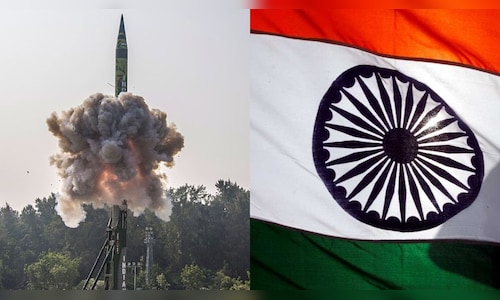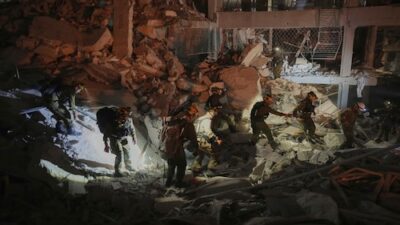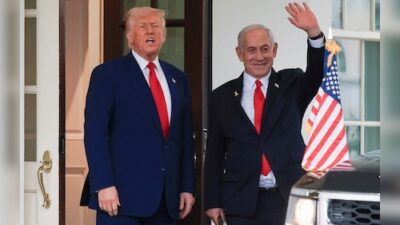The SIPRI report also highlights India’s strategic focus on China, along with the accelerating nuclear modernization efforts among regional powers as arms control norms weaken.
India’s Progress in Nuclear Modernisation
As of January 2025, India’s nuclear warhead count has increased to approximately 180, up from last year’s 172, per SIPRI.
This progression is evident not just in quantity but also in the enhancement of delivery capabilities. India is developing a more advanced “nuclear triad,” which includes land-based ballistic missiles, aircraft, and nuclear-powered submarines (SSBNs).
The report indicates that India is advancing towards ready-to-launch configurations by utilizing canisterized missile systems. This technology enables warheads to be kept in sealed, pre-mounted launch containers.
Read more: Israel Iran war LIVE updates: India to meet stakeholders, assess trade impact as Hormuz and Red Sea routes hit
This suggests a potential doctrinal shift, allowing India to integrate warheads with their delivery systems during peacetime, thereby facilitating quicker launch preparedness.
SIPRI further posits that India’s future missile capabilities may encompass Multiple Independently Targetable Re-entry Vehicles (MIRVs), enabling a single missile to target multiple sites, significantly enhancing strike capacity.
While Pakistan remains central to India’s nuclear deterrent, SIPRI notes that India is also focusing on capabilities capable of reaching targets within China, indicating an expanded strategic framework.
Pakistan’s Emphasis on Tactical Weapons
SIPRI reports that Pakistan’s nuclear arsenal remains stable at an estimated 170 warheads as of early 2025. However, the nation is also advancing its delivery systems, developing platforms for air, land, and sea launches.
In contrast to India’s ‘No First Use’ policy, Pakistan opts for a deliberately ambiguous doctrine, significantly emphasizing short-range tactical nuclear weapons. SIPRI describes this approach as potentially destabilizing due to its lower threshold for nuclear engagement.
SIPRI underscores Pakistan’s ongoing accumulation of fissile material and missile development, suggesting the potential growth of its arsenal over the next decade.
Read more: Iran says parliament is preparing bill to leave nuclear non-proliferation treaty
China’s Rapid Nuclear Expansion
China is recognized as the fastest-growing nuclear force, with its warhead count escalating from approximately 500 to over 600 in just one year. SIPRI reports that China has constructed more than 350 new Intercontinental Ballistic Missile (ICBM) silos, significantly enhancing its second-strike capability.
A potential shift towards integrating warheads with missiles even in peacetime is also observed in Beijing’s nuclear approach. SIPRI warns that if this trend persists, China may possess 1,500 warheads by 2025, altering the global strategic equilibrium.
Escalating Miscalculation Risks Amid Tensions
SIPRI’s analysis comes in the context of heightened global instability, from the Russia-Ukraine conflict to increasing tensions between Iran and Israel. The degradation of arms control frameworks, secrecy surrounding deployments, and an escalating reliance on tactical nuclear systems heighten the risks of accidental or preemptive escalation.
“Nuclear weapons do not prevent conflict. They introduce immense risks of escalation and catastrophic misjudgment—especially when disinformation is prevalent—and may ultimately compromise the safety of a nation’s populace,” remarked Matt Korda, Associate Senior Researcher with SIPRI’s Weapons of Mass Destruction Programme and Associate Director for the Nuclear Information Project at FAS.
Global Nuclear Arsenal Overview
Globally, Russia and the United States are the leading nuclear powers with 5,880 and 5,244 warheads, respectively, both nations actively working to modernize their arsenals. With the expiration of the New START treaty (Strategic Arms Reduction Treaty) approaching on February 4, 2026, the absence of discussions for extension could enable both countries to increase their nuclear stockpiles.
Read more: ‘Deeply concerned’: India, US and other countries react to Israeli strikes on Iran nuclear facilities
SIPRI indicates that France, possessing around 290 warheads, and the United Kingdom (UK), with about 225 warheads, are maintaining smaller yet modernizing arsenals. France seeks to develop a broader “European dimension” to its deterrence strategy, while the UK is constructing new SSBNs to uphold continuous at-sea deterrence, notwithstanding fiscal pressures.
North Korea is estimated to have assembled 50 warheads, with capabilities and materials for producing more. SIPRI highlights its movements towards tactical nuclear weaponry as particularly destabilizing.
Israel continues its tradition of nuclear opacity, maintaining approximately 80-90 warheads and showing recent indications of technical enhancements.



